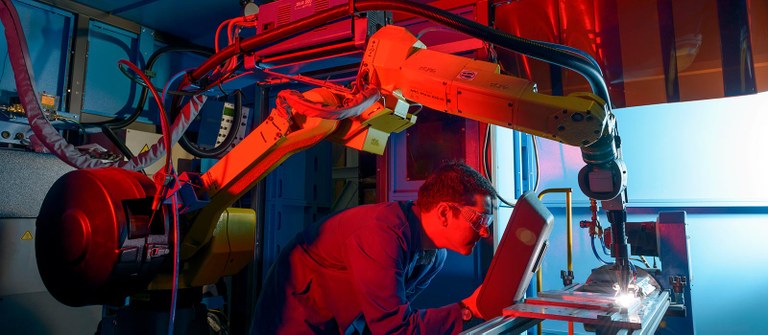
The WAAMMat programme
Aim and Objectives
The overall aim of the WAAMMat programme is to increase the maturity level of the wire + arc additive manufacture (WAAM) process to enable rapid industrial exploitation. Specific objectives are:
- Move the process closer to application for industrial members by increasing the maturity level of current WAAM technology
- Address key technical issues
- Identify likely production issues such as repeatability, quality and costs
- Provide a route to commercialisation of the process
- Support development within industrial member companies
- Ensure all tools are available to allow exploitation of WAAM technology
WAAMMat programme description
WAAMMat is a rolling technology development programme at Cranfield University comprising a series of individual projects and activities which are brought together under one umbrella programme. Each of these projects or activities has its own individual objectives, scope and terms and conditions (T&Cs). As such the scope of the WAAMMat programme is defined by the sum of these projects and activities. These projects and activities are a continually evolving, with a mixture of direct industry, part industry sponsored, internal University and agency funded. Consequently the actual scope and level of activity of the WAAMMat programme is also continually evolving.
The research and development (R&D) in the WAAMMat programme is split into two parts; the core programme and the satellite programme. The vast majority of the R&D is in the core programme and all of this is pre-competitive and the outcomes are intended to benefit all members. For those members wishing to carry out confidential R&D using WAAM then these activities will form the satellite programme. No WAAM technological developments will be carried out as part of the satellite programme.
Industrial members in the programme are either full or associate members. All members will have access to, or visibility of, all of the research from the WAAMMat core programme. Full members will also have rights to all research outputs and intellectual property arising in the core WAAMMat programme during their period of sponsorship. Members also have rights to request access to any WAAMMat core background intellectual property considered necessary for them to exploit the WAAM process.
The overall aims and objectives for the WAAMMat programme drive the direction of the programme. However the detailed technical approach is dictated by the short term needs/interests of sponsors and opportunities presented through internal projects and external funding opportunities.
